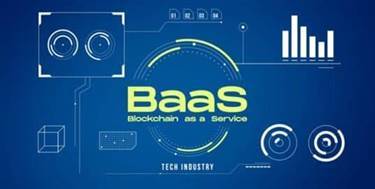The software development lifecycle (SDLC) is the cost-effective and time-efficient process that development teams use to design and build high-quality software. The goal of SDLC is to minimize project risks through forward planning so that software meets customer expectations during production and beyond. This methodology outlines a series of steps that divide the software development process into tasks you can assign, complete, and measure. The basic systems development life cycle for a data conversion project is the same as for any application development endeavor, with activity centered around planning, analysis, requirements, development, testing, and implementation. Like other data-related projects, the activities in the analysis phase should include profiling the data in the source and target data structures.
By developing an effective outline for the upcoming development cycle, they’ll theoretically catch problems before they affect development. Learners are advised to conduct additional research to ensure that courses and other credentials pursued meet their personal, professional, and financial goals. This methodology is referred to as a waterfall because the output from one stage is the input for the next stage. However, regardless of the model you pick, there are a lot of tools and solutions, like Stackify’s Retrace tool, to assist you every step of the way.
SDLC Tools and Best Practices
Designers must ensure that all requirements detailed in the SRS document are met. The value of thorough analysis and an SRS document is that it helps keep your system development project aligned and ensures that resources are appropriately allocated. There are various approaches to testing, and you will likely adopt a mix of methods during this phase. Behavior-driven development, which uses testing outcomes based on plain language to include non-developers in the process, has become increasingly popular. This phase of the system development life cycle is often split into different sub-stages, especially if a microservice or miniservice architecture, in which development is broken into separate modules, is chosen.

Depending on their feedback, the developers need to make changes and adjustments. Usually, this part of the SDLC process happens in a limited way at first. Occasionally, as required, a product may be released in a specific market prior to final launch. Before getting down to business, it is crucial to create a well-thought-out strategy for the upcoming work. During this stage, developers usually analyze the core challenges of the project and dive deeper into the problem the software is intended to pinpoint. The ultimate goal of this stage is to come up with an idea of how the final software will help address a specific problem.
Space Flight Phase A: Concept and Technology Development
SDLC or the Software Development Life Cycle is a process that produces software with the highest quality and lowest cost in the shortest time possible. SDLC provides a well-structured flow of phases that help an organization to quickly produce high-quality software which is well-tested and ready for production use. Every hardware or software system will go through a development process which can be thought as an iterative process with multiple steps. SDLC is used to give a rigid structure and framework to define the phases and steps involved in the development of a system. The term software development lifecycle (SDLC) is frequently used in technology to refer to the entire process of technology innovation and support. When teams develop software, they code and test on a different copy of the software than the one that the users have access to.
- Each phase of the project involves business modeling, analysis and design, implementation, testing, and deployment.
- A system is any information technology component – hardware, software, or a combination of the two.
- Selenium, a browser testing tool, is one popular example of such a platform.
- By anticipating costly mistakes like failing to ask the end-user or client for feedback, SLDC can eliminate redundant rework and after-the-fact fixes.
- Before getting down to business, it is crucial to create a well-thought-out strategy for the upcoming work.
- This step builds upon the planning stage, building out the tasks you need to do in the work breakdown schedule.
- System development life cycles are typically used when developing IT projects.
Learn the strengths and weaknesses of the current system with improvement as the goal. Next, let’s explore the different stages of the Software Development Life Cycle. Comments about specific definitions should be sent to the authors of the linked Source publication. Software testing must take place in a specialized testing environment and should test the full functionality of the system (the test environment).
Agile
Think of “our” SDLC as the secure systems development life cycle; the security is implied. With its customizable spreadsheet interface and powerful collaboration features, Smartsheet allows for streamlined project and process management. Use Smartsheet’s SDLC with Gantt template to get started quickly, and help manage the planning, development, testing, and deployment stages of system development.

Different modules or designs will be integrated into the primary source code through developer efforts, usually by leveraging training environments to detect further errors or defects. During the testing stage, developers will go over their software with a fine-tooth comb, noting any bugs or defects that need to be tracked, fixed, and later retested. Once complete, development managers will prepare a design document to be referenced throughout the next phases of the SDLC. Furthermore, developers will often create a software requirement specification or SRS document. Maintenance involves updating an existing software product to fix bugs and ensure reliability. It can also include adding new features or functionality to a current product.
What Is SRS in Project Development?
SDLC is also an abbreviation for Synchronous Data Link Control and software development life cycle. Software development life cycle is a very similar process to systems development life cycle, but it focuses exclusively on the development life cycle of software. The abbreviation SDLC can sometimes refer to the systems development lifecycle, the process for planning and creating an IT system. The system typically consists of several hardware and software components that work together to perform complex functions. The agile model arranges the SDLC phases into several development cycles.

Agile is suitable for projects where requirements are expected to change or the project scope is not well-defined initially. It’s often used in industries like software development, where rapid innovation and flexibility are essential. Ongoing support and maintenance represent the most prolonged system development life cycle phase. As time passes, your system will need regular support and maintenance to keep running and performing as expected. Before your developers can move onto the development stage of the process, you must first address system design. The design phase transforms the information in the SRS document into a logical structure.
Strategic Planning for/of Information Systems
The system specification represents the technical requirements that will provide overall guidance for system design. Because this document determines all future development, the stage cannot be completed until a conceptual design review has determined that the system specification properly addresses the motivating need. Regardless of which software development methodology is chosen, they follow the basic stages creating any digital product.

This requires a lot of research and planning to ensure that your final product meets your expectations (and those of your customers). The big step is creating a detailed project plan document and work breakdown structure that outlines the requirements. The Spiral Model is one of several software development models, which combine elements of iterative and waterfall models. Iterative, rapid application development offers so much flexibility that you run the risk of never completing your project. In contrast, planned, linear style development can yield applications that do not meet the needs of end users even if they meet the stated requirements on paper. At this stage, the goal is to deploy the software to the production environment so users can start using the product.
Data conversion life cycle
Also, during the analysis phase, the team defines the inputs and outputs of the data flow in and out of the system by undertaking a thorough system analysis of the business processes that need to be covered and solved by the future system. To achieve a comprehensive planning cycle, members of the project need to have a deep understanding of what tasks the future information system needs to solve. With that foundation as context, the quality and time spent on the planning phase have a direct correlation it consulting rates to the success of the project. Setting a strong foundation and defining a clear understanding of a project is crucial to the success of any information system. For this reason, the SDLCs first phase is planning where stakeholders and all parties involved in the project participate to clearly define requirements and the nature of what the information system will need to solve. The planning phase helps delineate all subsequent tasks so they can be planned and budgeted for accordingly.
The Bottom Line: Successful software development starts with the SDLC
Many organizations subdivide their SDLC methodologies into a larger number of phases than the five referenced in NIST guidance, potentially offering closer alignment of SDLC phases and corresponding RMF tasks. Table 6.1 lists some SDLC phase names commonly used in government organizations, arranged by the five general phase names used in NIST documentation and where applicable indicating different terms that may be used to represent the same phase. Other steps which may appear include project initiation, functional specifications, detailed specifications, evaluation, end-of-life and other steps that can be created by splitting previous steps apart further.
New to software development?
The biggest drawback of this model is that small details left incomplete can hold up the entire process. A configuration management system shall be implemented during development and implementation. The Forensic Laboratory configuration management process is defined in Chapter 7, Section 7.4.5.

